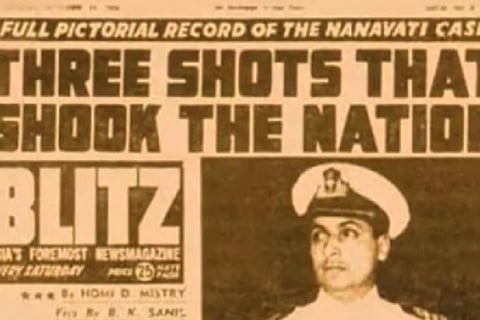

On April 27, 1959, Kawas Manekshaw Nanavati, a Commander in the Indian Navy, was having lunch with his English-born wife Sylvia at their house in Mumbai. It is then that Sylvia told her husband about an affair she had been having with Prem Ahuja, a Sindhi business man and a friend of the Nanavatis.
Nanavati then dropped Sylvia and their two children to watch a movie, collected a revolver from his ship along with ammunition and went to confront Ahuja.
At Ahuja's residence, when Nanavati asked him if he'd marry Sylvia and take care of their children, the former apparently said that he did not marry every woman he slept with.
At that very moment, Nanavati shot Ahuja dead and surrendered himself to the police. Thus began a case that was to capture the imagination of the entire country and pop culture in the years to come.
"Rustom", an Akshay Kumar-Ileana D'Cruz starrer which released recently, is said to have been based on this very case.
A video by mylaw.net explains the nitty gritty of a case which, according to senior advocate of Supreme Court, Sanjay Hegde, "everybody vaguely knows things about but not the entire details".
"In its time Nanavati was probably bigger that your Sheena Bora or your Aarushi kind of cases. And there wasn't the constant attention of a visual media in those days. Everything came out in the newspapers and when people read print they apply a much greater imagination. And this was a case that captured the imagination of the reading public in those days and those who were nterested in law," Hegde told mylaw.net.
The video puts across several lesser known but equally interesting facts about the case.
Nanavati was charged with culpable homicide amounting to murder under Sec 302 of IPC and culpable homicide not amounting to murder under Section 304.

Image source: Screenshot; Ajay Sidhu11/YouTube
What caught the imagination of the public was not just the nature of the crime but also the people involved in it, explains Kalyani Ramnath, Ph. D candidate at Princeton University specialising in south Asian legal history.
Contrary to what is widely believed, Ramnath says that it was not because of the Nanavati case that the jury system was abolished in India.
She goes on to point out the role of Blitz, a "gossipy, sensationalist, over the top Bombay-based tabloid" run by RK Karanjia, "for the way in which Nanavati, Ahuja and Sylvia were perceived in the press".
Nanavati was the "wronged husband" who acted on "grave and sudden provocation", but later turned himself up to the police.
The presiding judge Justice RB Mehta called the jury's decision "perverse" and referred the case to the Bombay HC. He contended, by going through the evidence, that Nanavati's act was not one taken at the spur of the moment.
Nanavati was sentenced to rigorous life imprisonment. But things were yet to settle down.
He was given a temporary pardon by the then Governor of Maharashtra so that he could approach the SC.
The air was tense in Bombay as Parsis wanted Nanavati to be pardoned, but the Sindhis were strongly against it.
Watch the video to understand how the case unfolded and what happened finally.